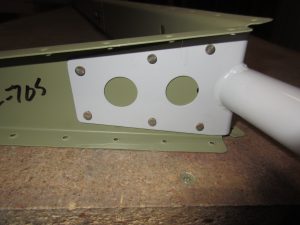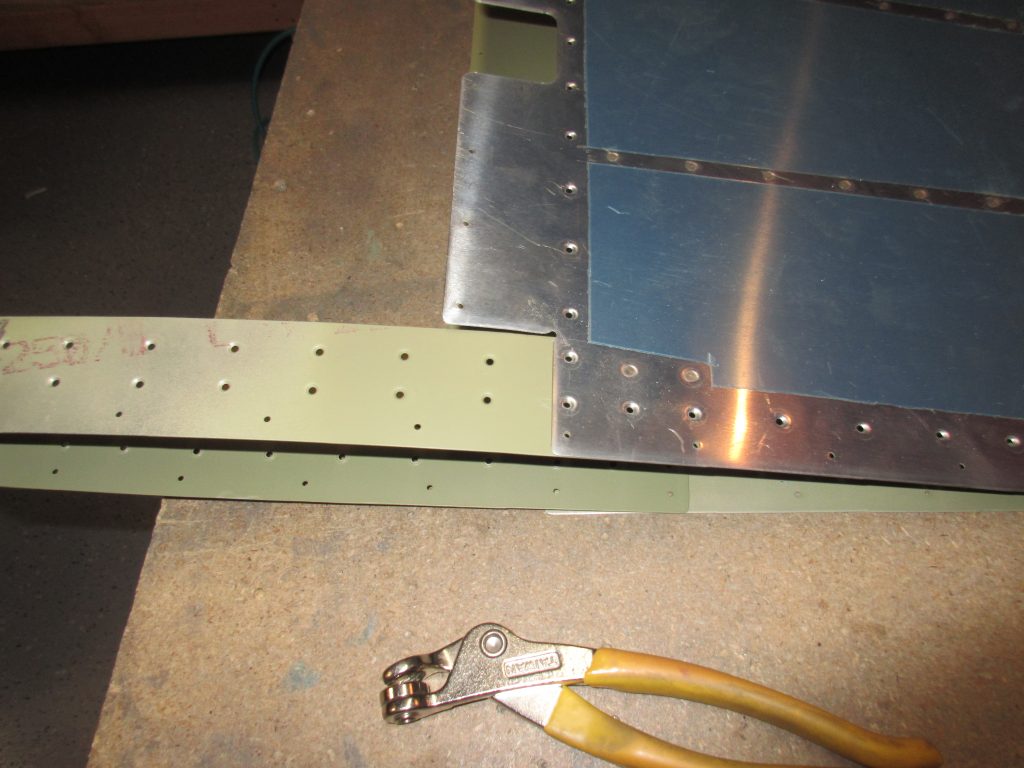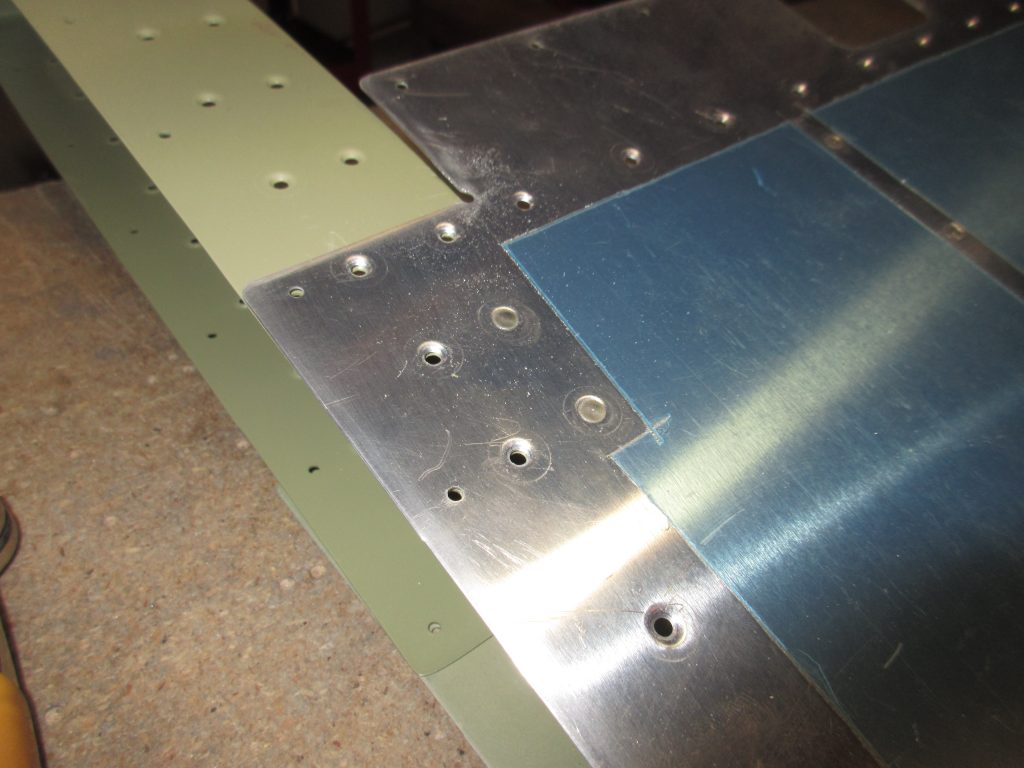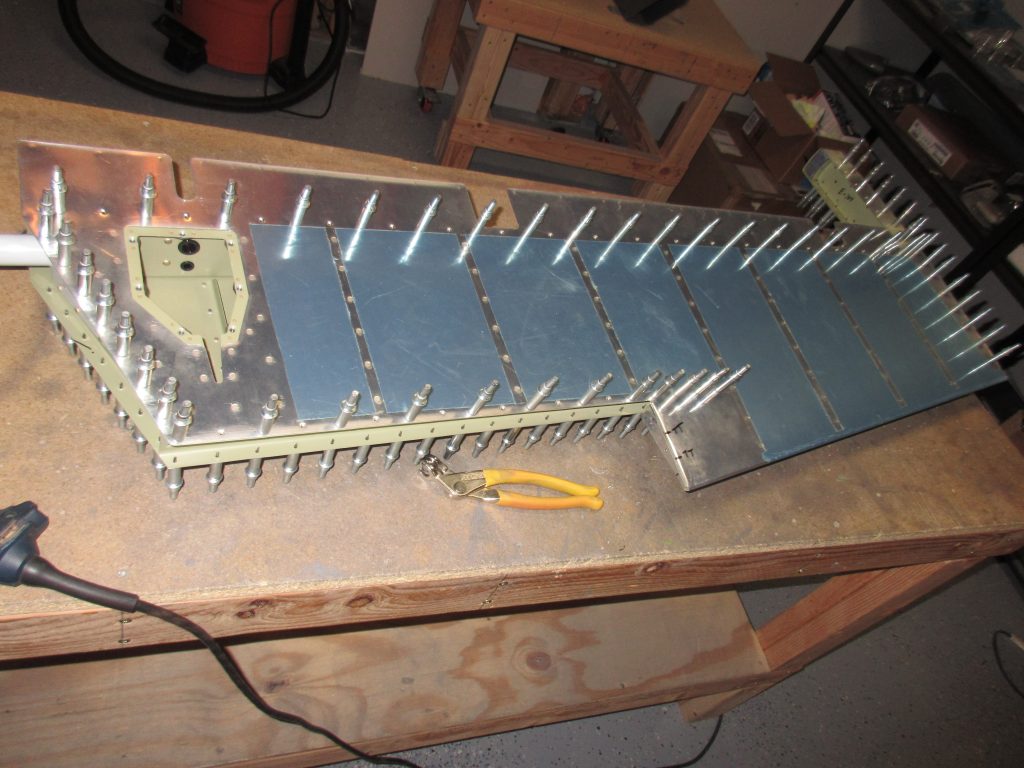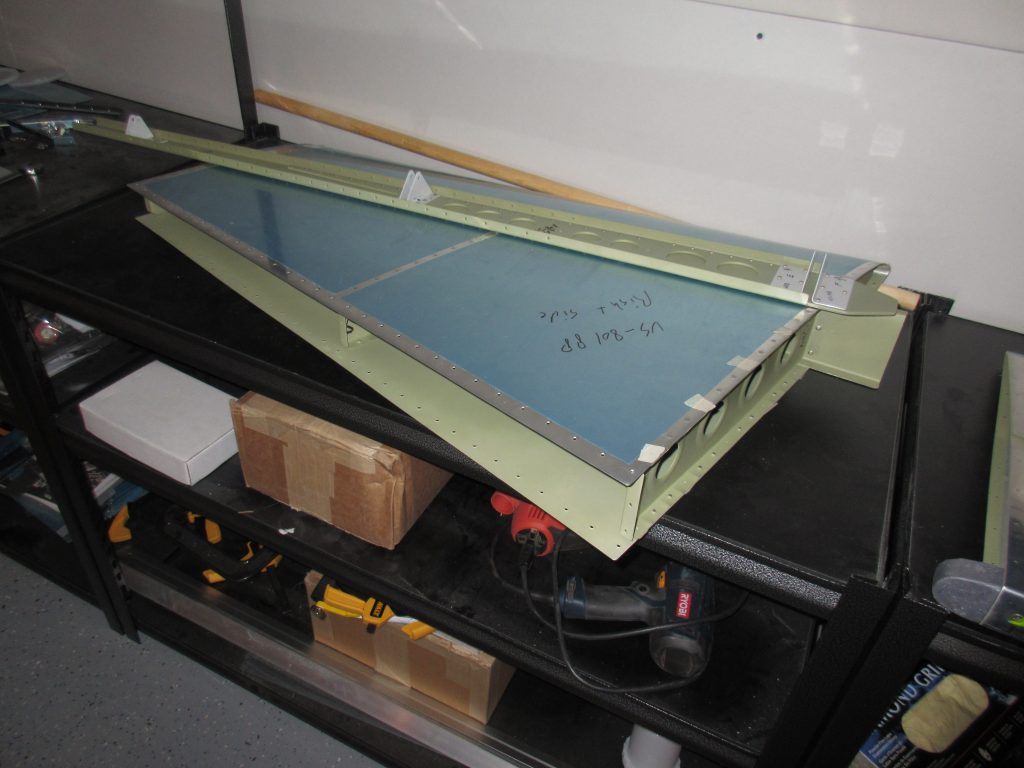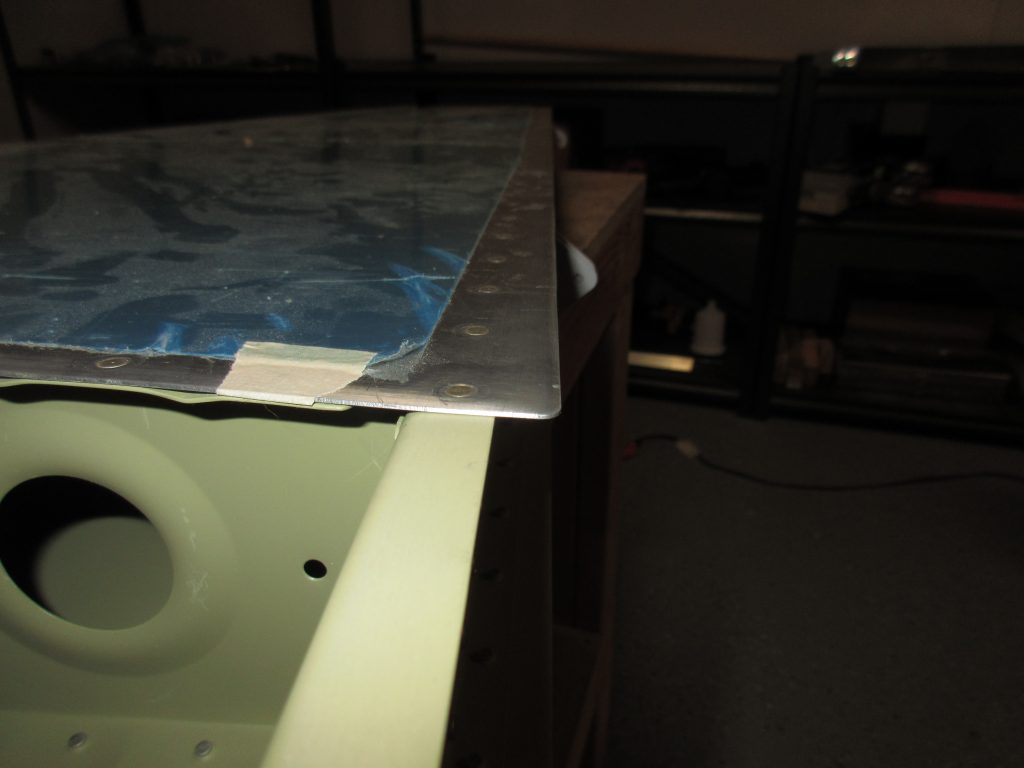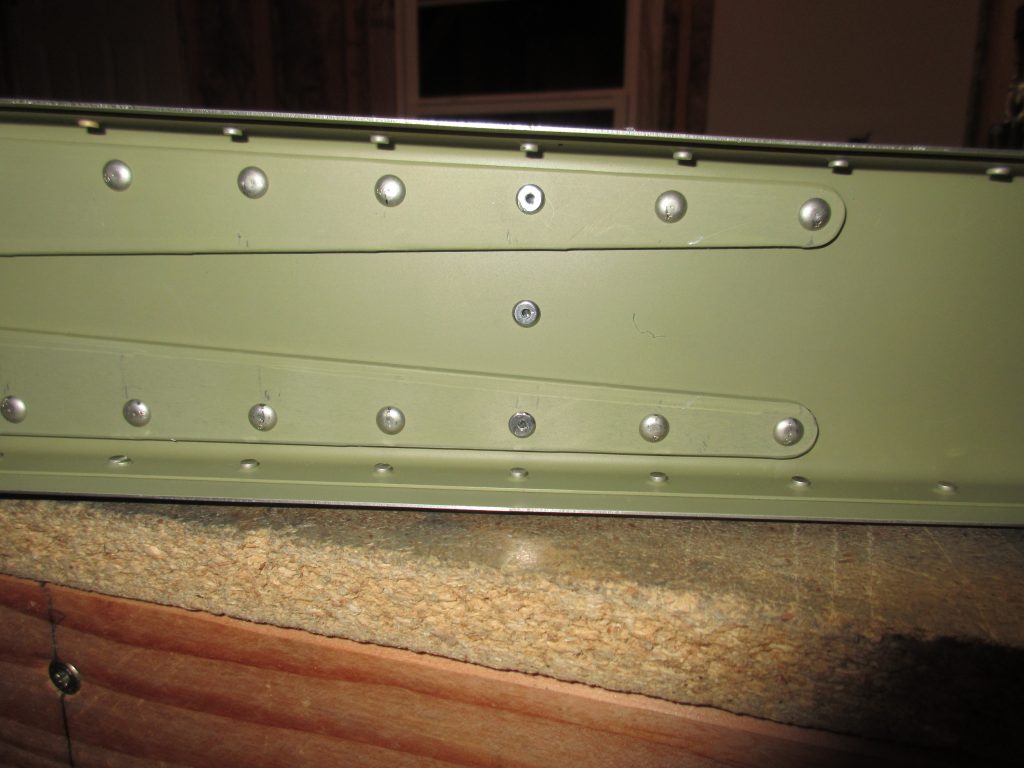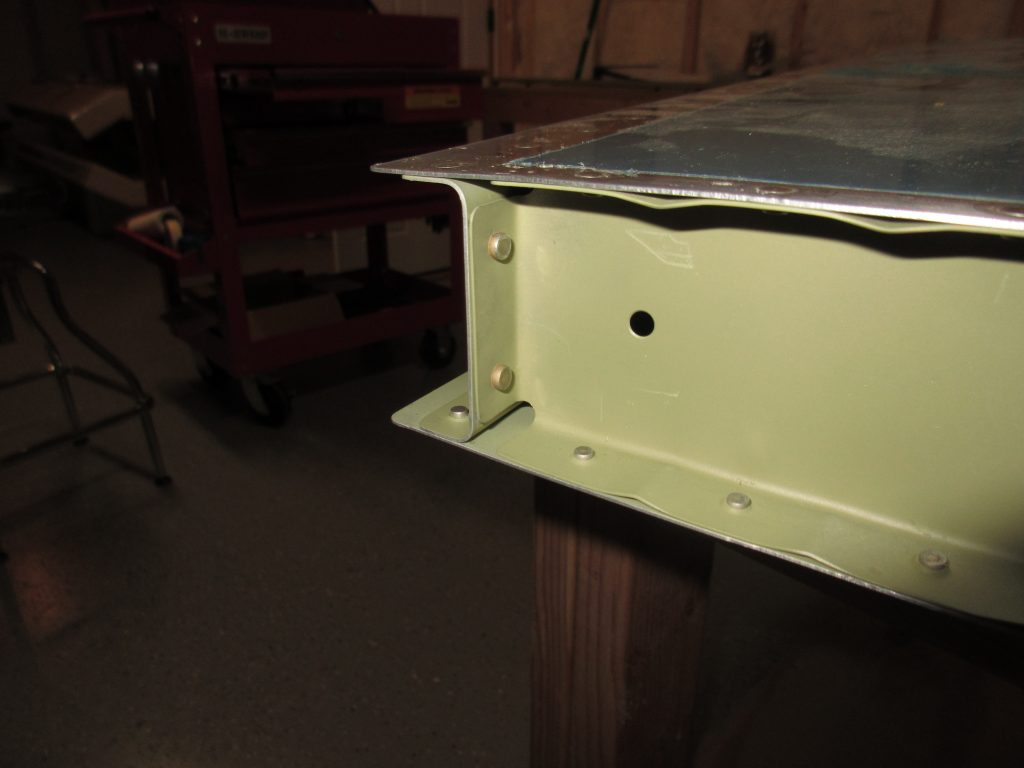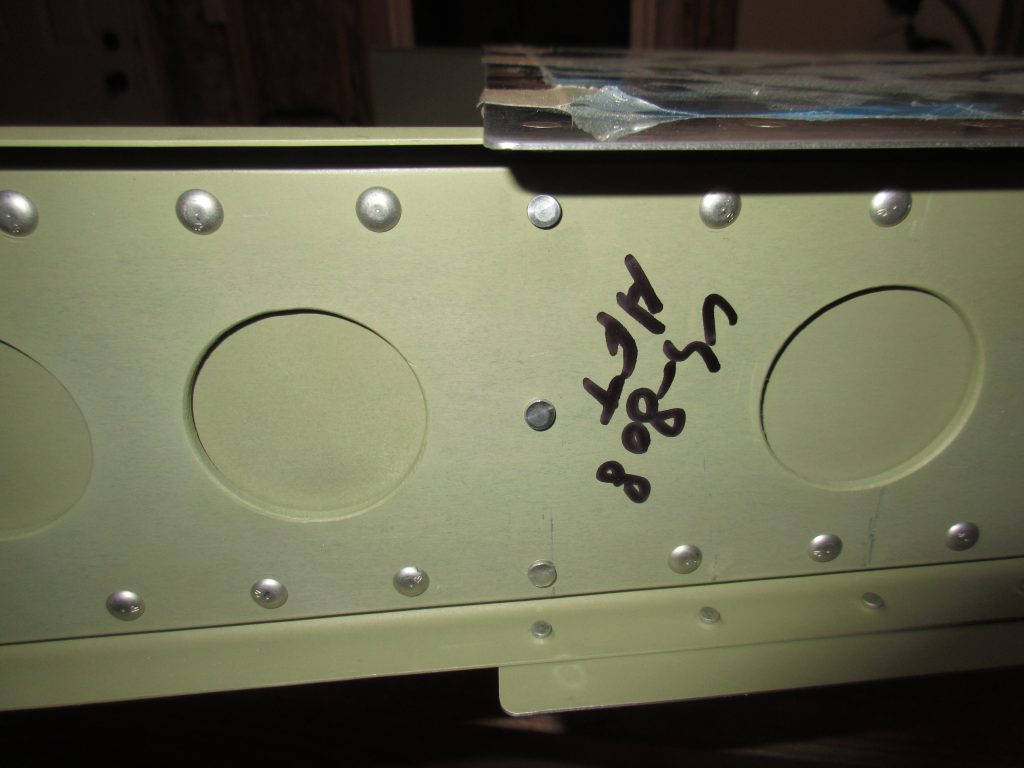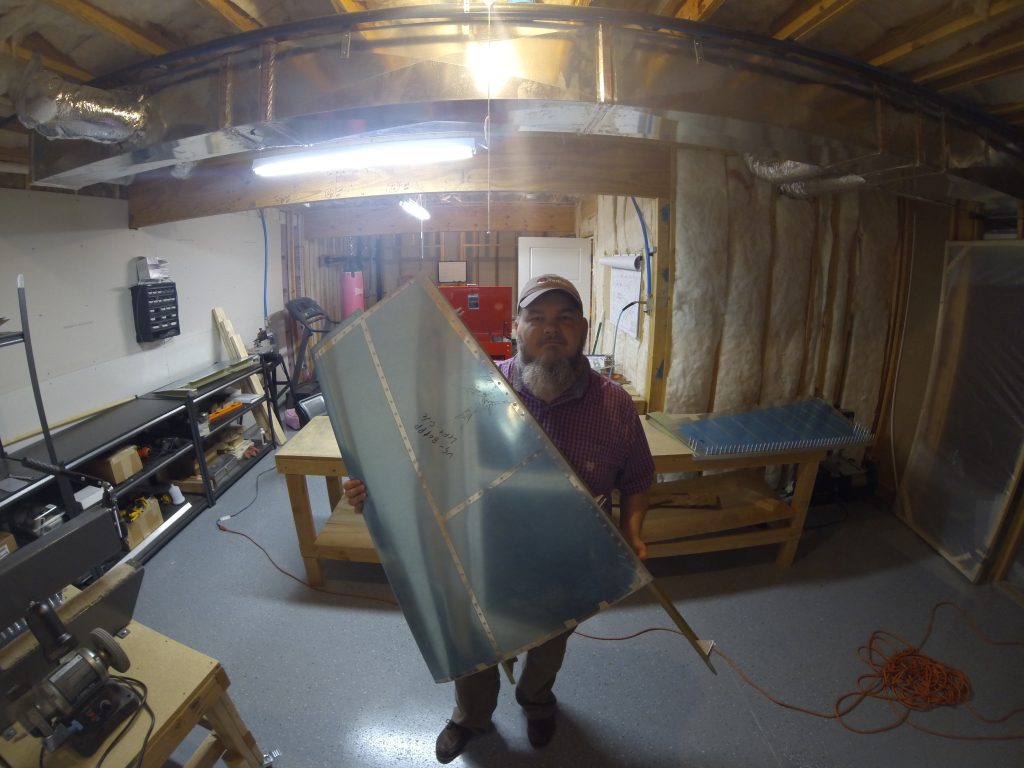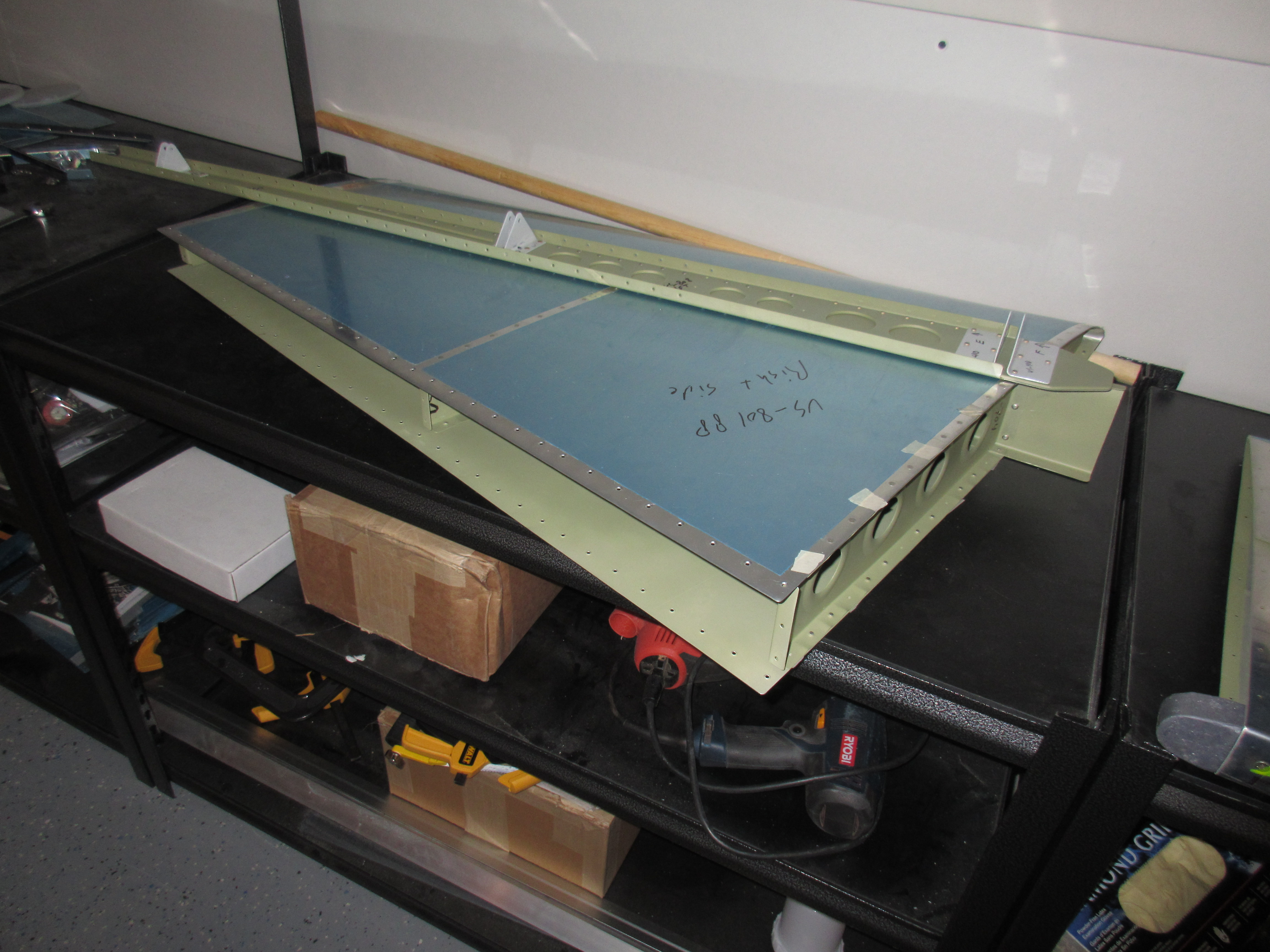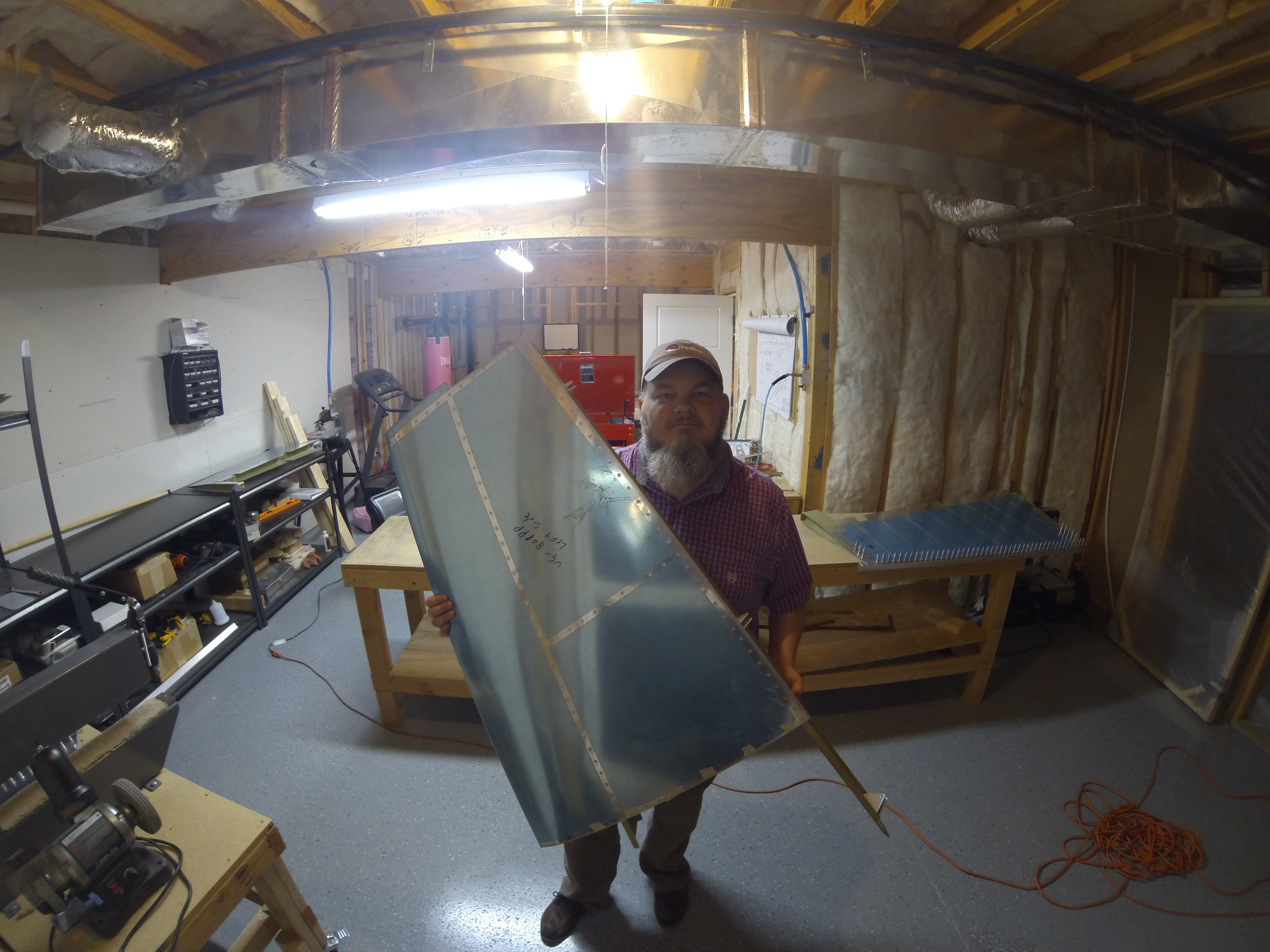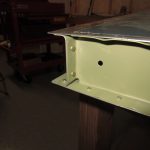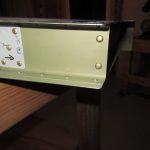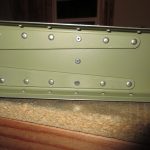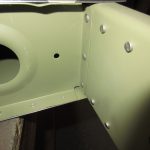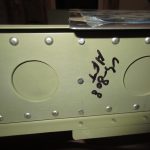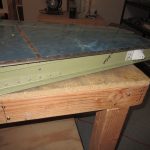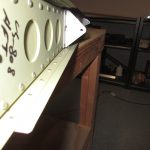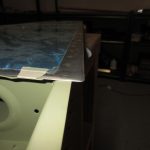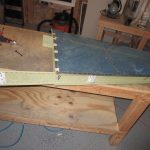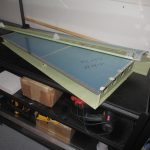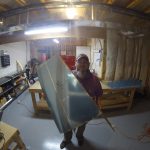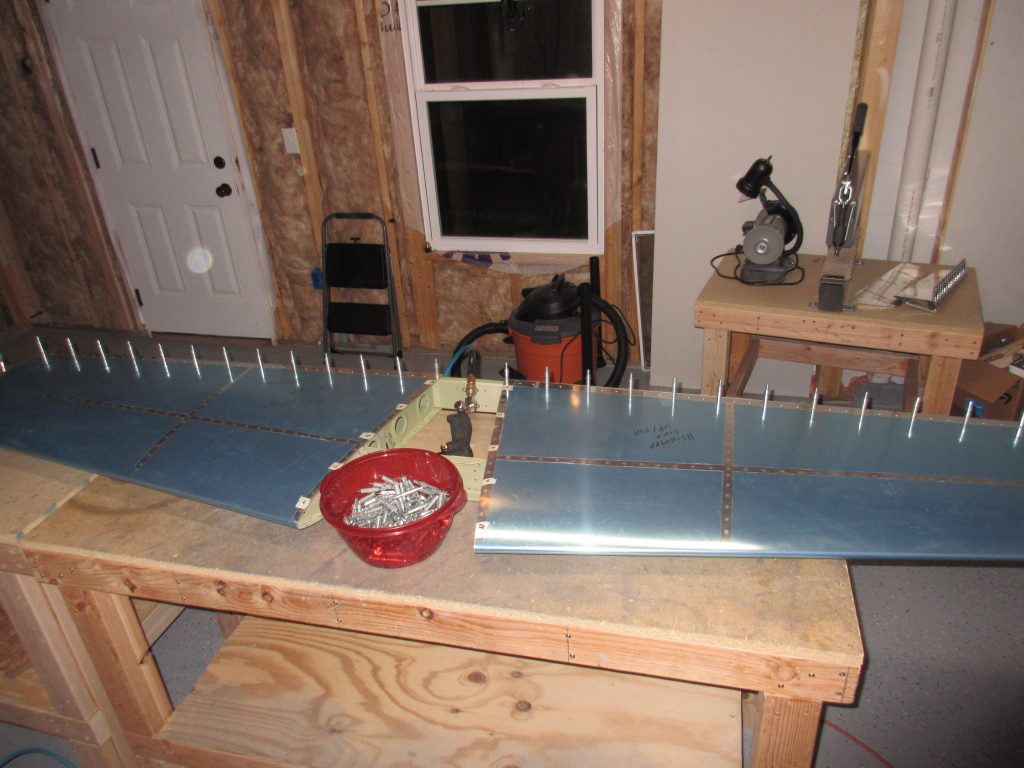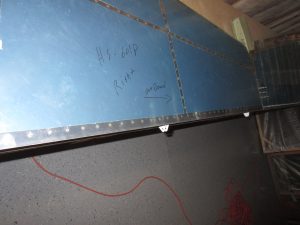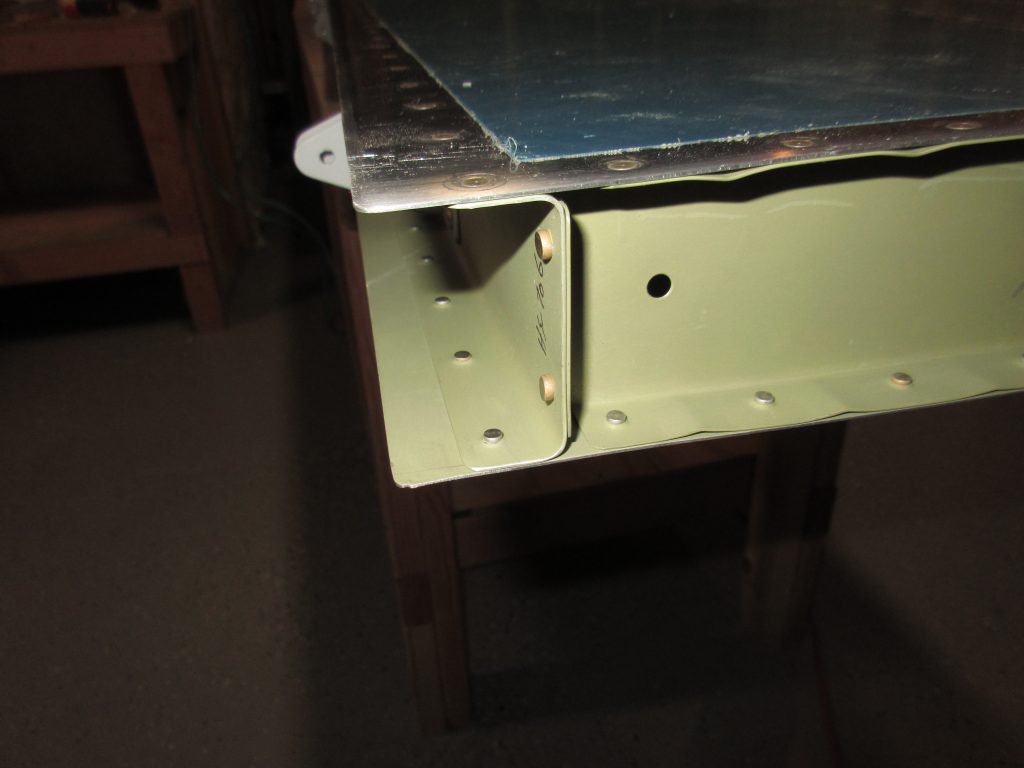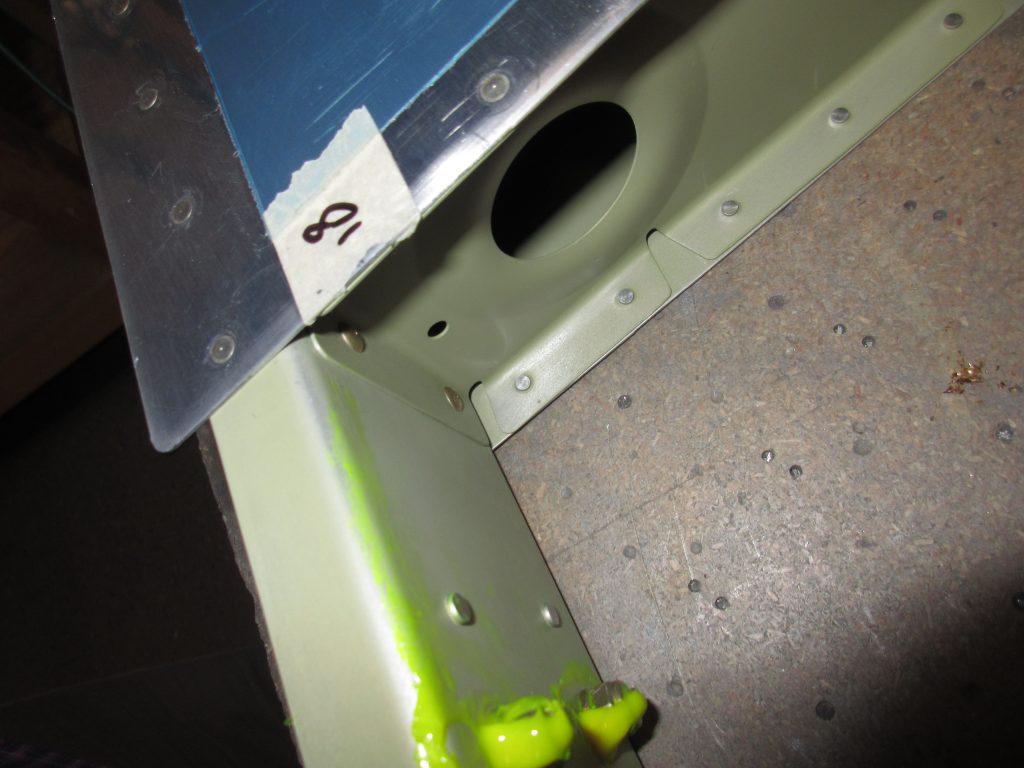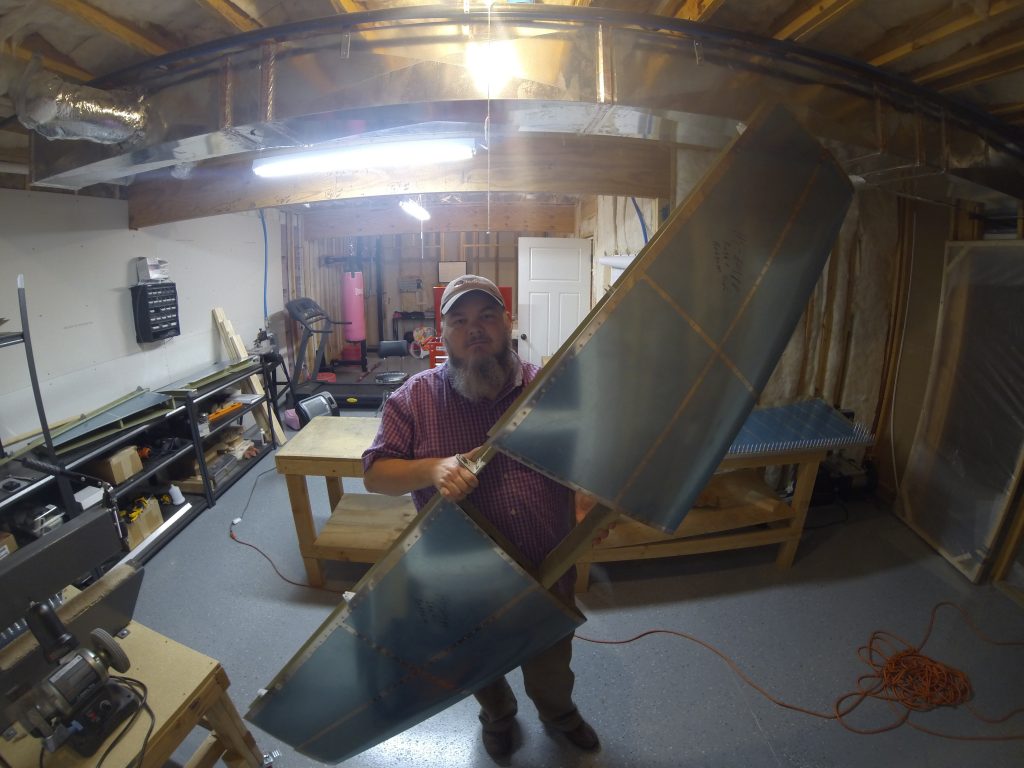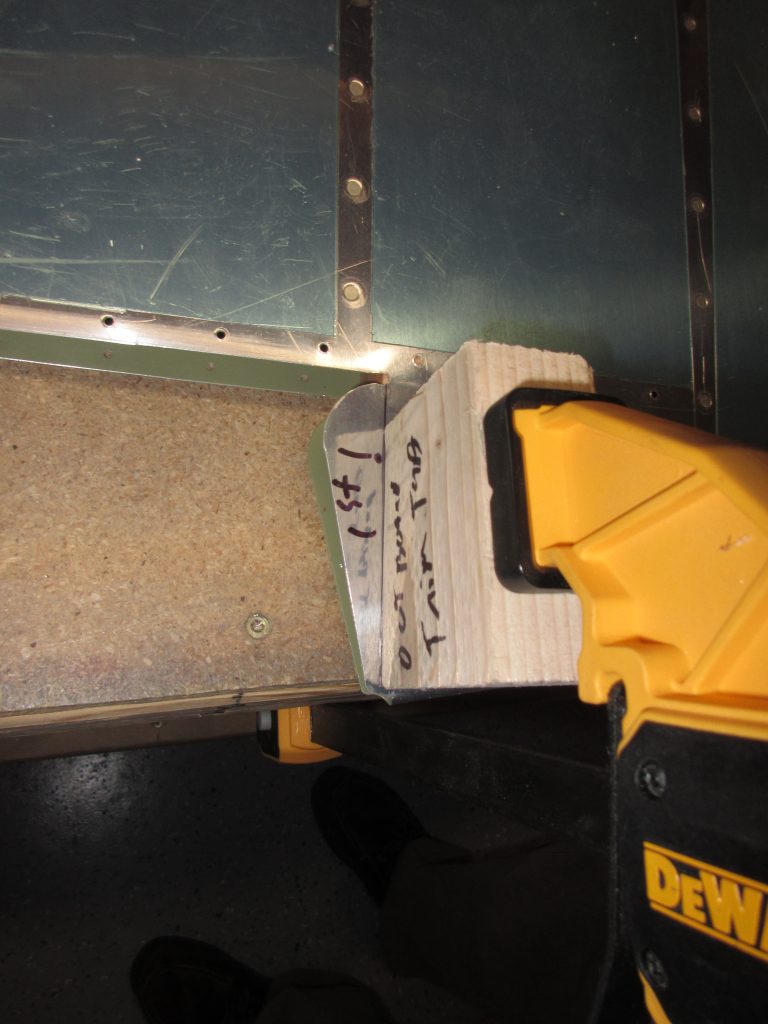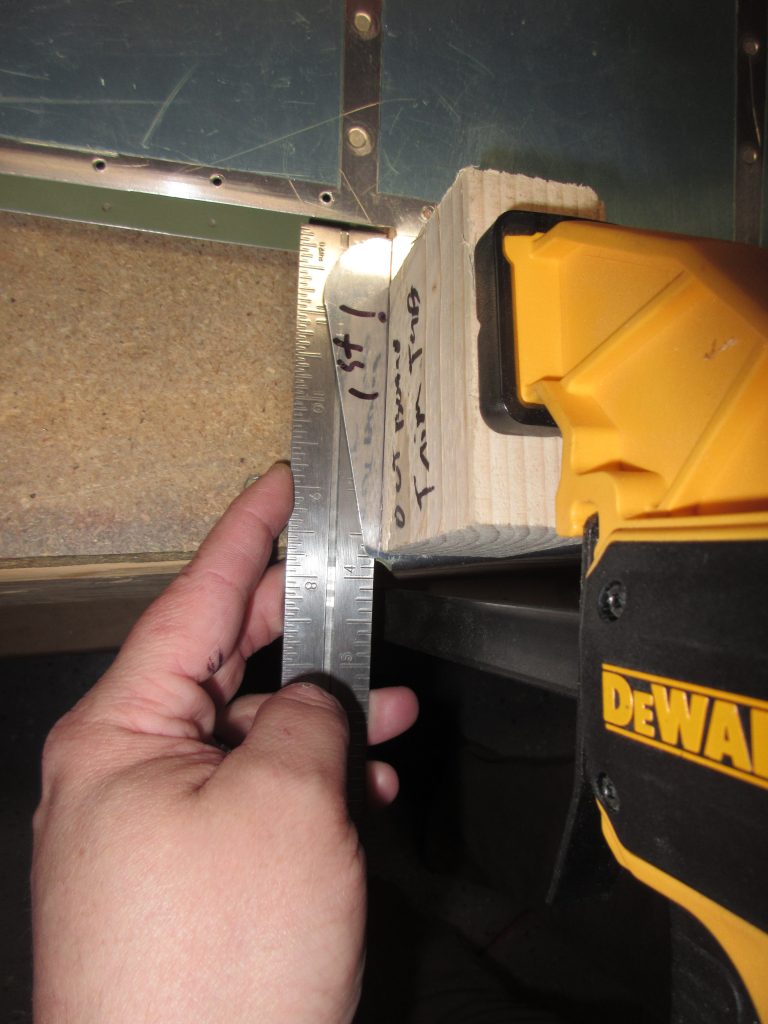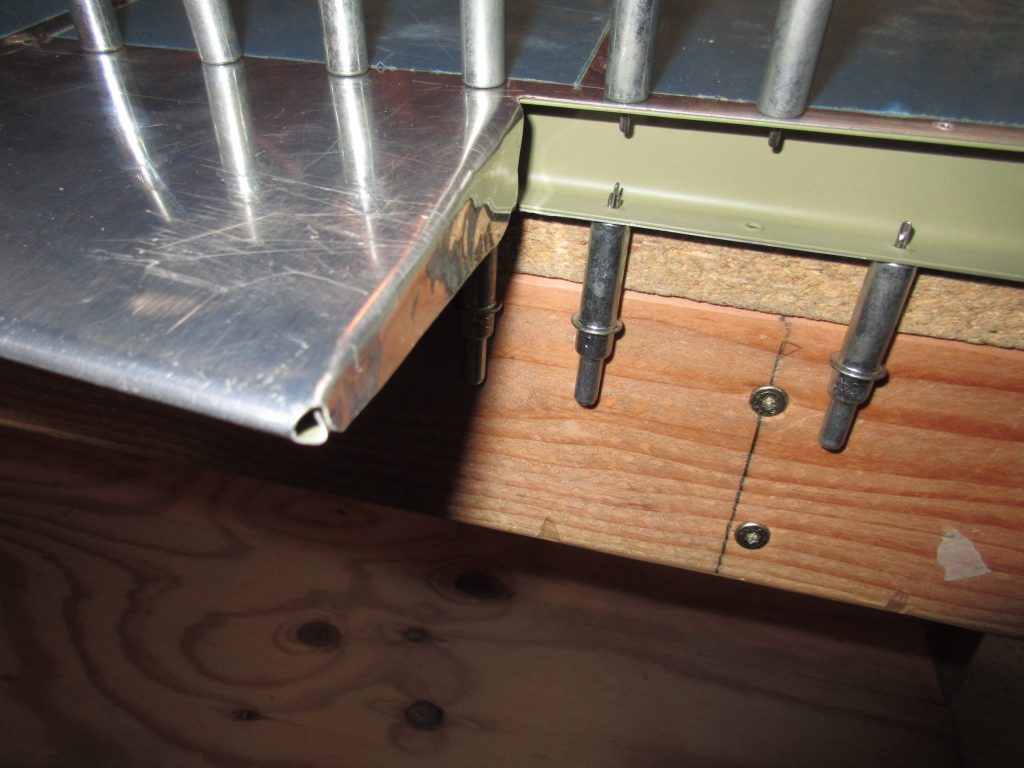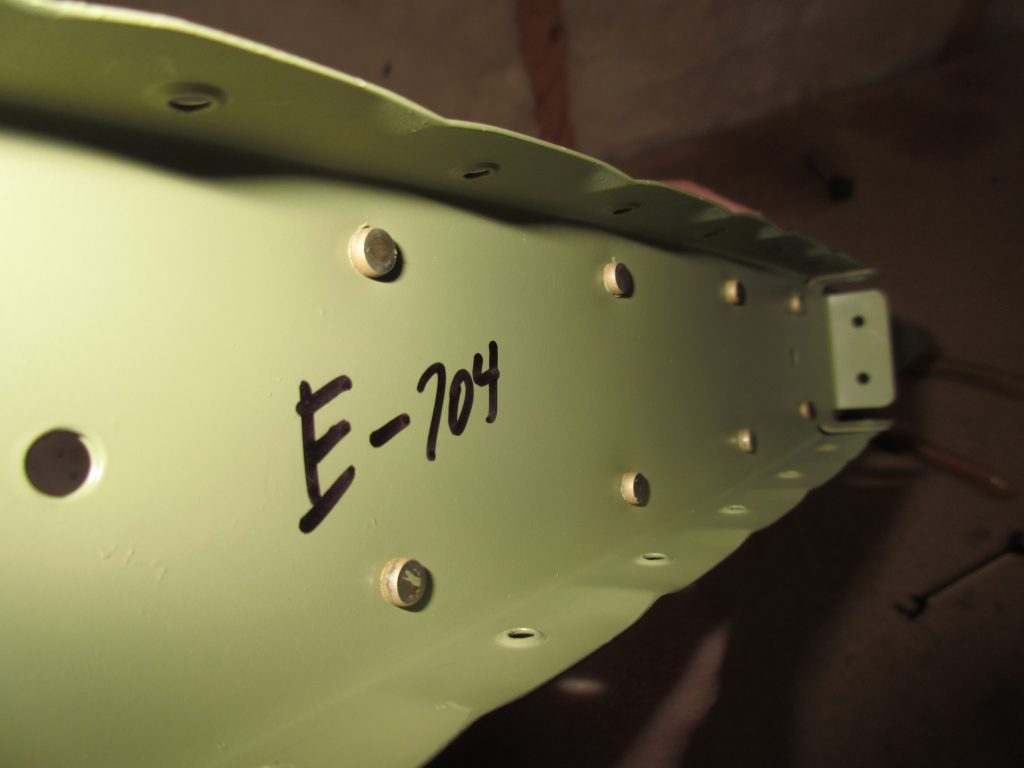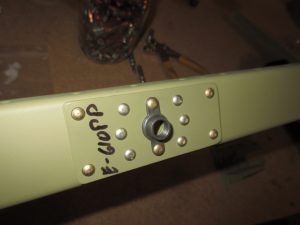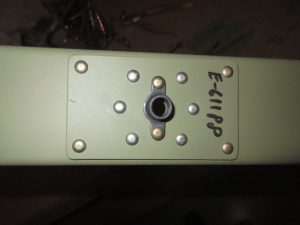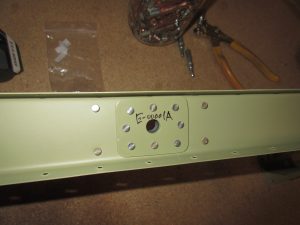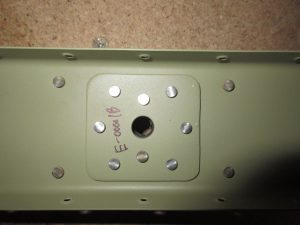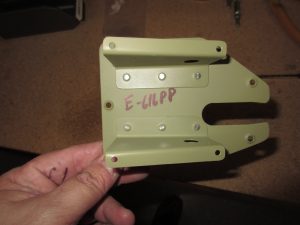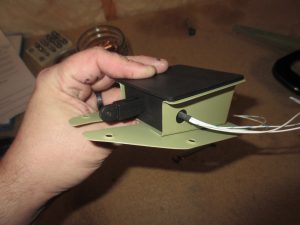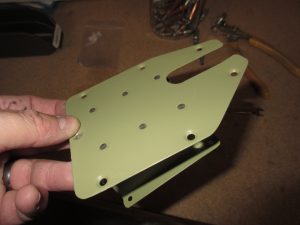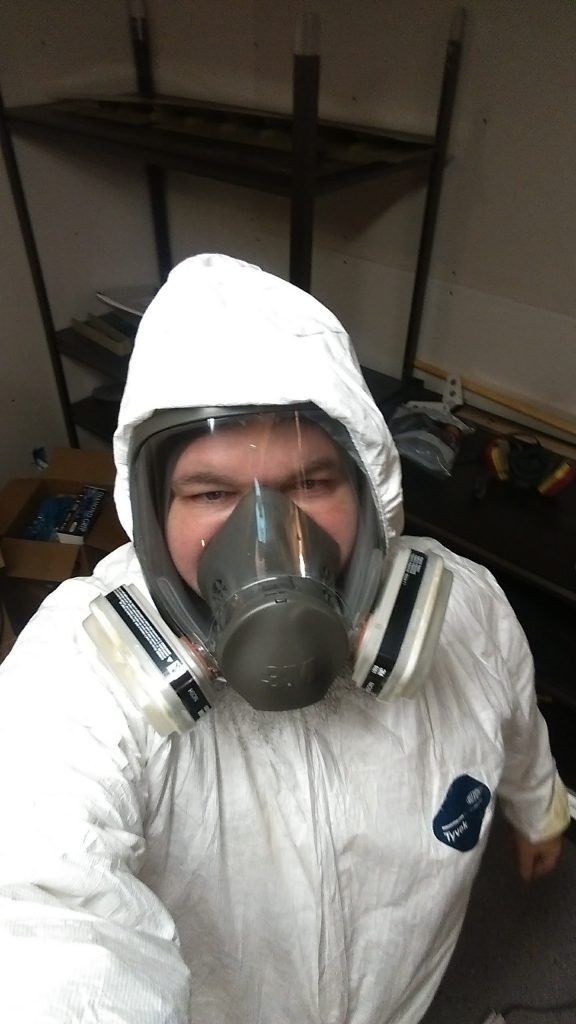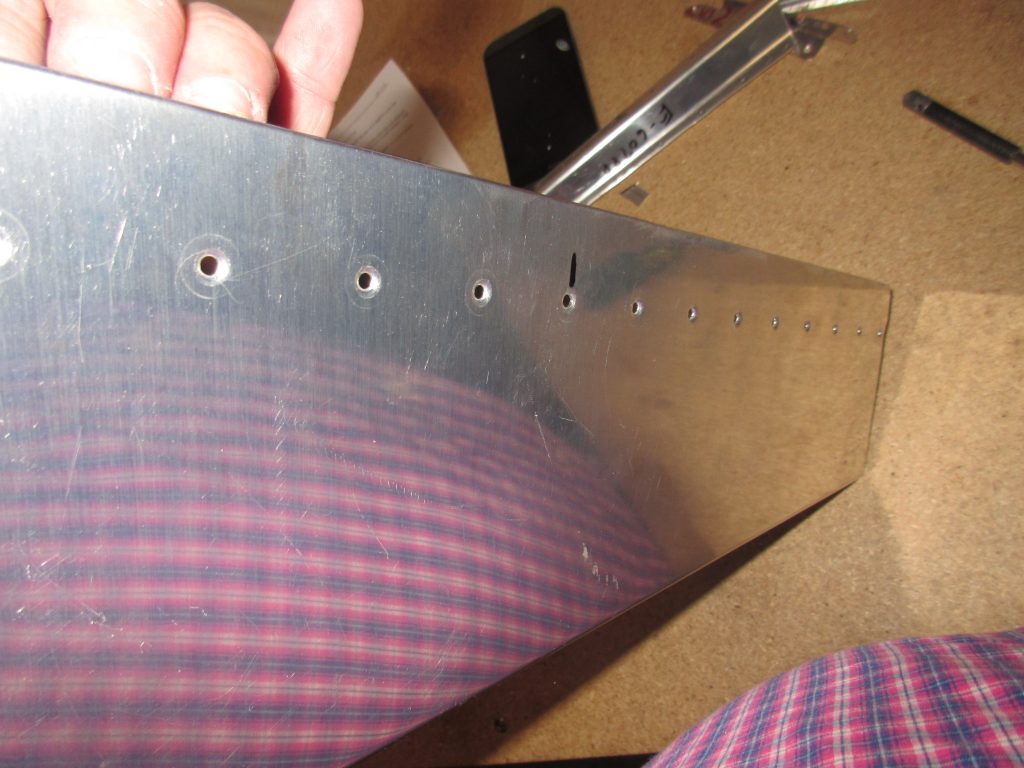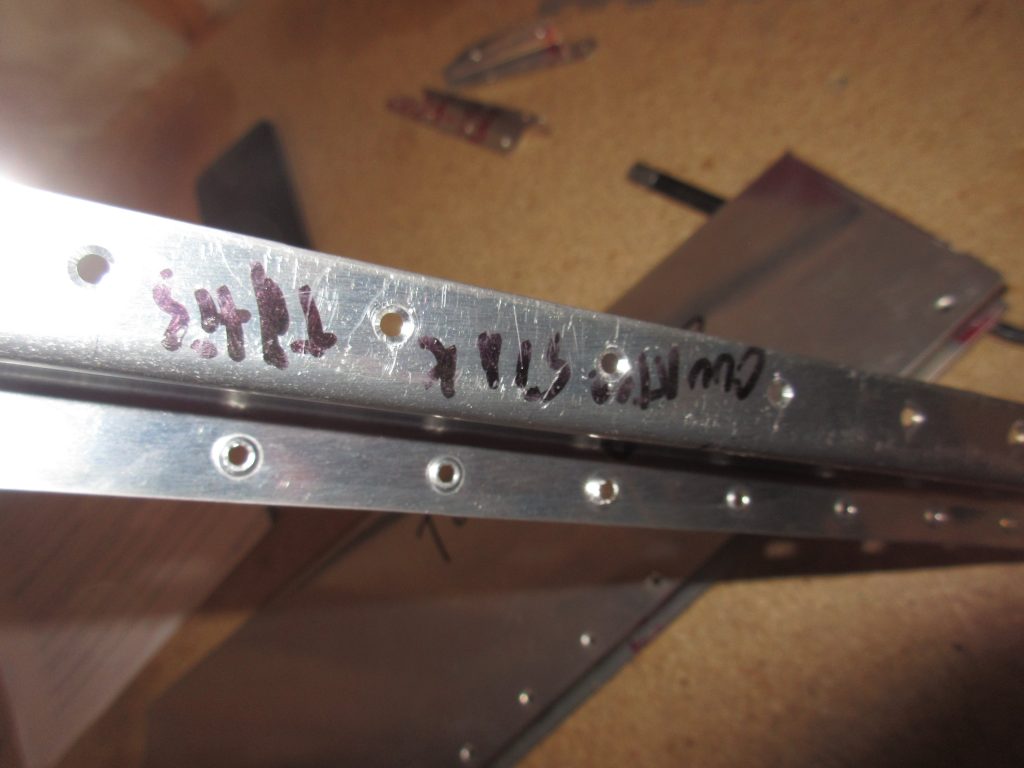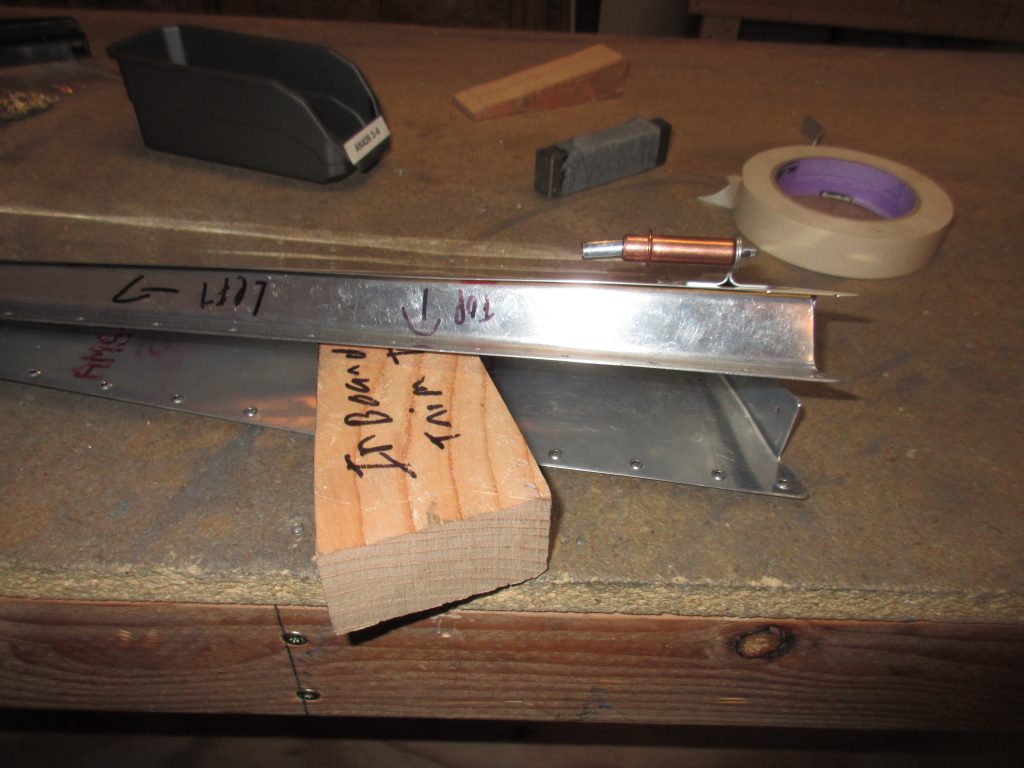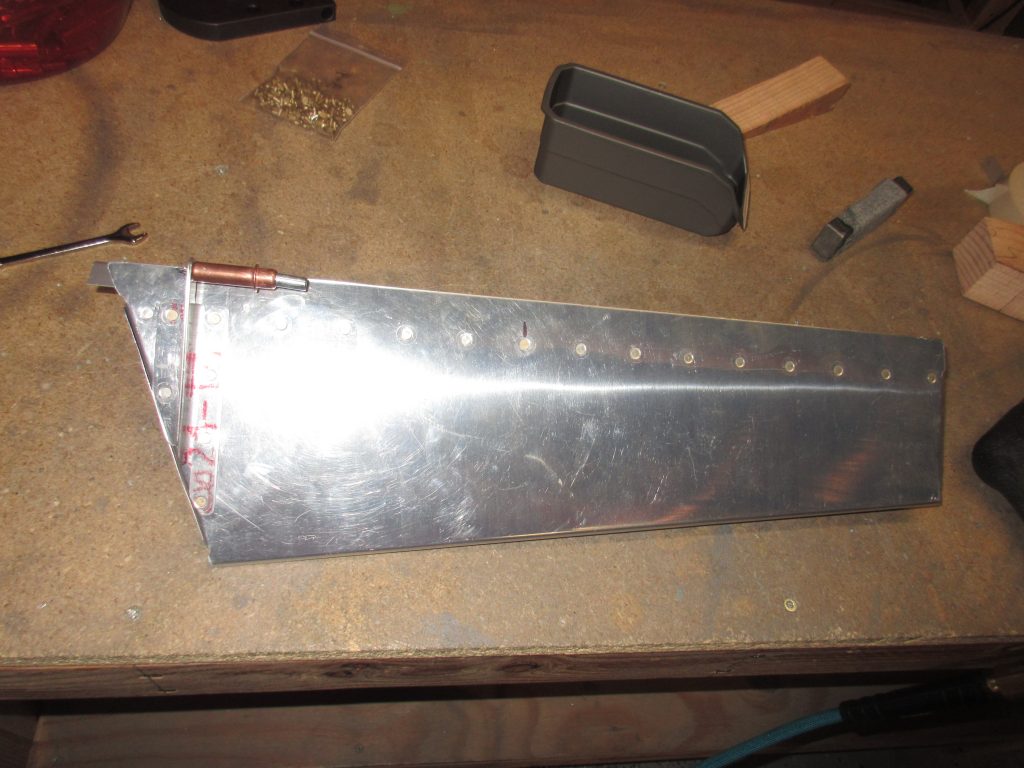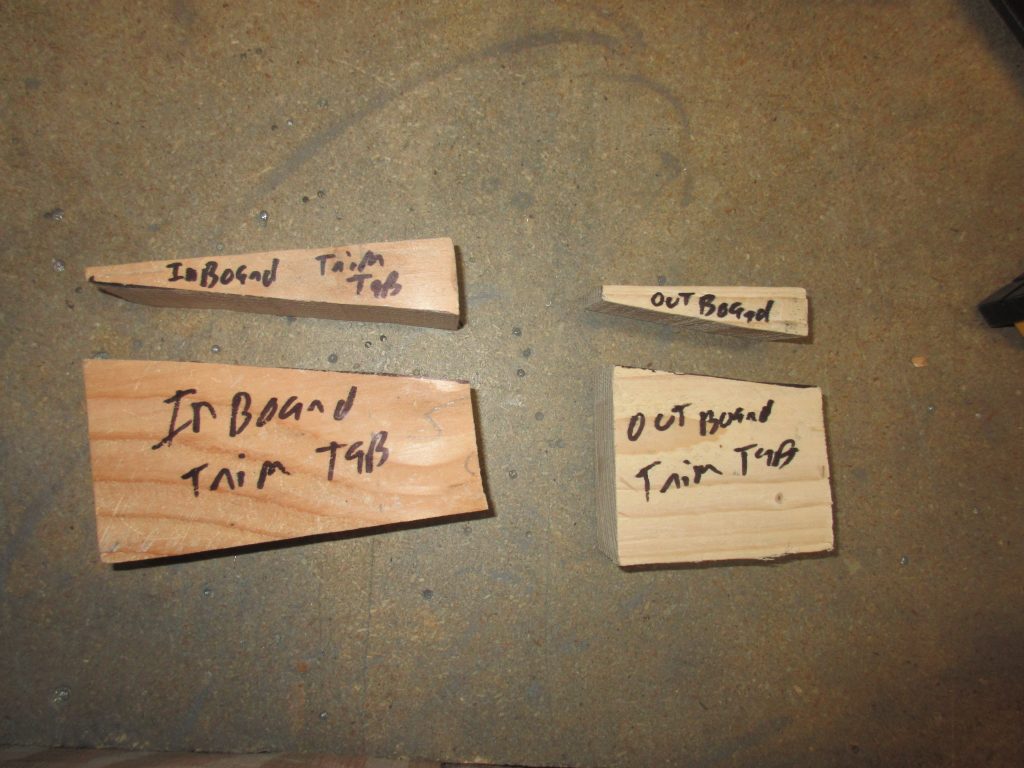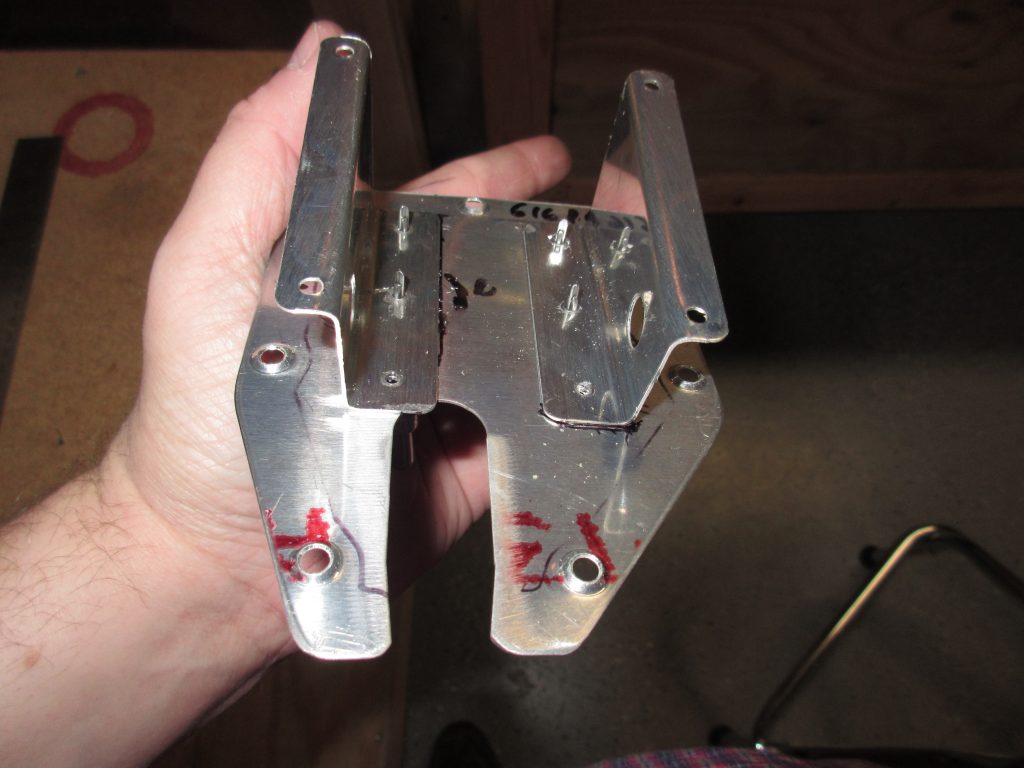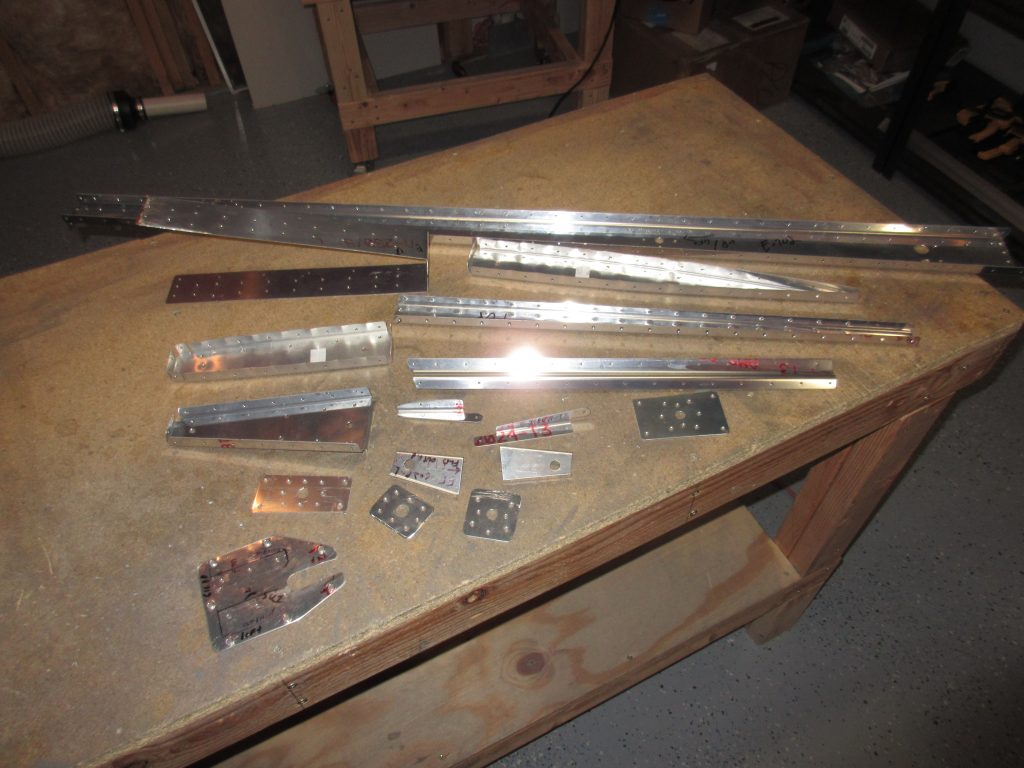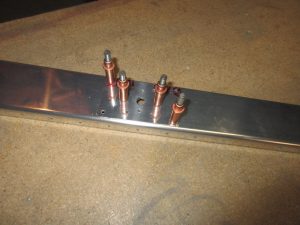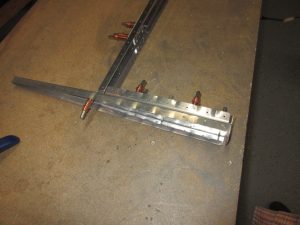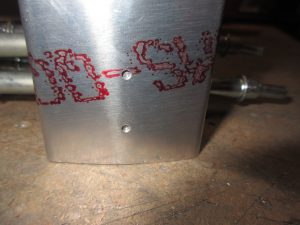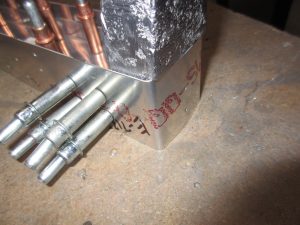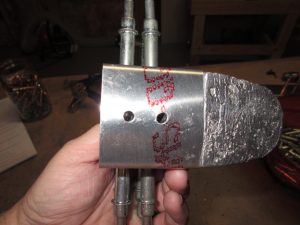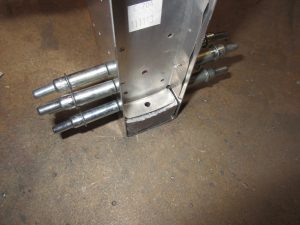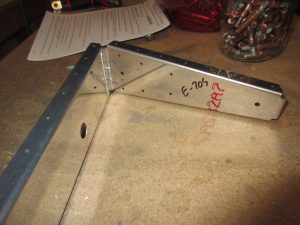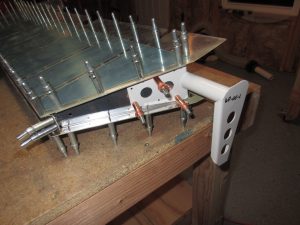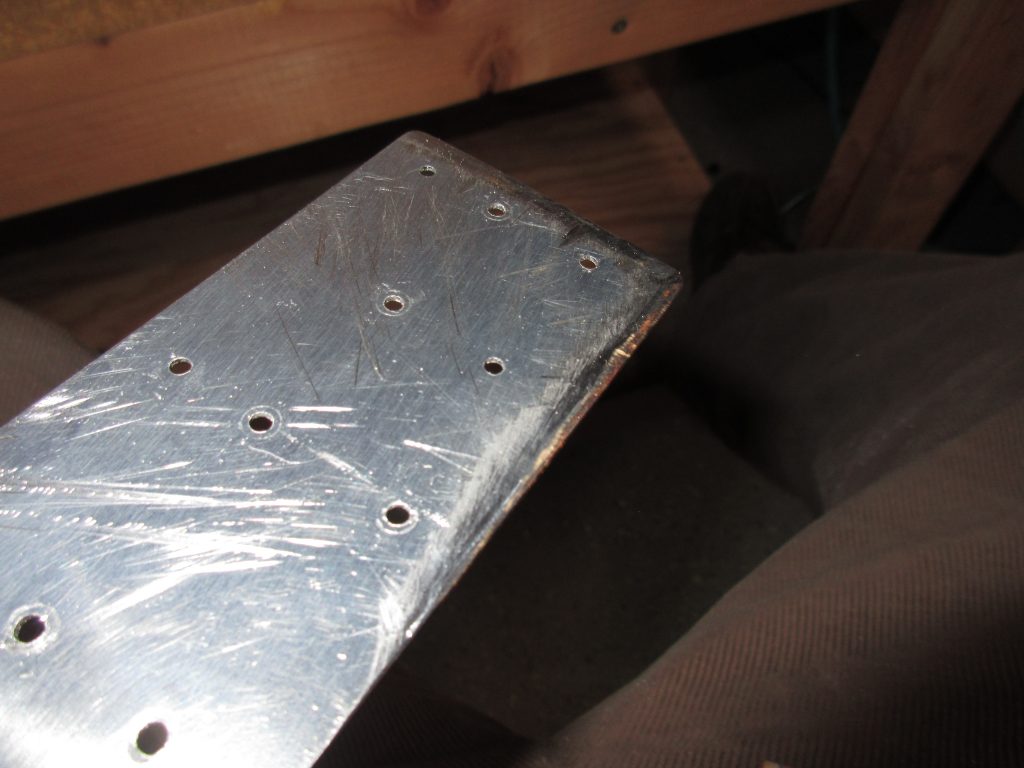Tonight I worked to rivet on the skin of the Left Elevator and the last few remaining parts of the skeleton for it as well. In the last work session, I completed the spar and a few other parts, but tuckered out before I got to the skin. I started out by riveting the E-703 tip rib assembly to the E-702 spar, making sure to get the hard to reach rivets first. The last time I did this on the right elevator, I left two rivets that were hard to reach with a squeezer in a bad position, and I spent a couple hours working on it to get them riveted. I learned to get those two first this time 🙂
Once I had the tip rib squared away, I moved to the other end and riveted on the E-705 end rib to the E-702 spar, making sure to face the flush rivets in the proper direction so as to not interfere with the WD-605-1-L elevator horn that I riveted next. These all were pretty straight forward, and I used my squeezer to get a perfectly set rivet on them.
Now its time to move on to the skins. First, I attached the E-713 counterbalance skin to the E-701 elevator skin with clecos, and noted which two rivet holes I need to set first, before inserting the skeleton. I opted to set these rivets now, and use AN426 flush rivets instead of using pop rivets after the skeleton is inserted into the skin. We just have to be cautious to make sure we use the correct holes 🙂
Before inserting the skeleton, I popped in some plastic snap bushings into the holes in the spar for the trim servo jack shaft and wiring. Its easier to do now than when the skin is closed up.
Now, its time to mate the skin with the skeleton, and cleco it all together for one last check before final riveting. I gently inserted the skeleton into the skin, and lined everything up and clecoed every hole. Once I had it all clecoed I used a straight edge against the skin to check its straightness, both on the stiffeners and between the stiffeners. Then I removed every other cleco to make riveting easier.
I only riveted the bottom skin for now. I will leave the top skin free so I can put pro-seal on the stiffener ends before closing it up for good. I closed the bottom skin by inserting a rivet in every other hole and squeezing it. Then I removed the clecos, and clecoed the holes they were in. On the left elevator we have to use 4 blind rivets on the outboard end of the E-606PP spar, as there is no way to get to it otherwise. I used MK319BS blind rivets in those last 4 holes, and made sure they were sitting as flush as possible. They were not 100% flush like the AN426 rivets, but they ended up flush enough to make me happy.
With that being done, all that remained was to mark and drill the holes on the tabs that I bent a few nights ago. Van’s doesnt have these holes pre-punched, because its impossible to know where they’d end up after the bending, so we have to be creative. Van’s does tell us to make sure the rivets from the trim tab do not interfere with the elevator skins, so I put the trim tab in its location, and marked where the pre-punched holes for it were on both the trim tab itself, as well as the elevator skin, seen in the photo above. I then decided to place my elevator tab rivets between where the trim tab rivets go, so as to give me plenty of clearance. I then drilled the holes with a #40 bit, followed by a #30 bit to fit the CS4-4 blind rivets.
The last bit of work for the night was to bolt on the E-714 counterweight. I picked our the screws, washers and nuts as called for by the plans, ran them through the counterweight assembly and then torqued them down to 30 inch/lbs of torque as specified in the manual. Then, I gobbed on some torque-seal to make annual inspections easier in the future.
That finished up the work for tonight. Here’s a quick time lapse of the work to make the FAA happy that I actually completed the work, and a photo gallery of all the photos below that.
Google Photos Link: https://goo.gl/photos/B2SmEbJ6Q8Gg9iM29
Hours Worked: 3






